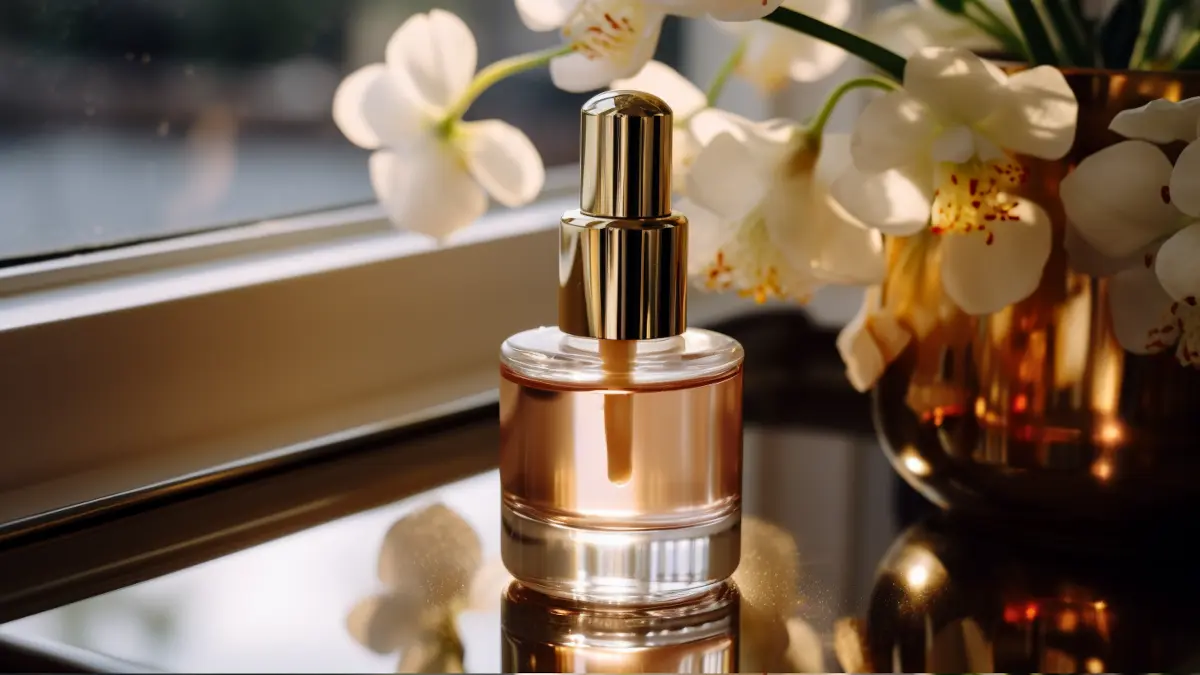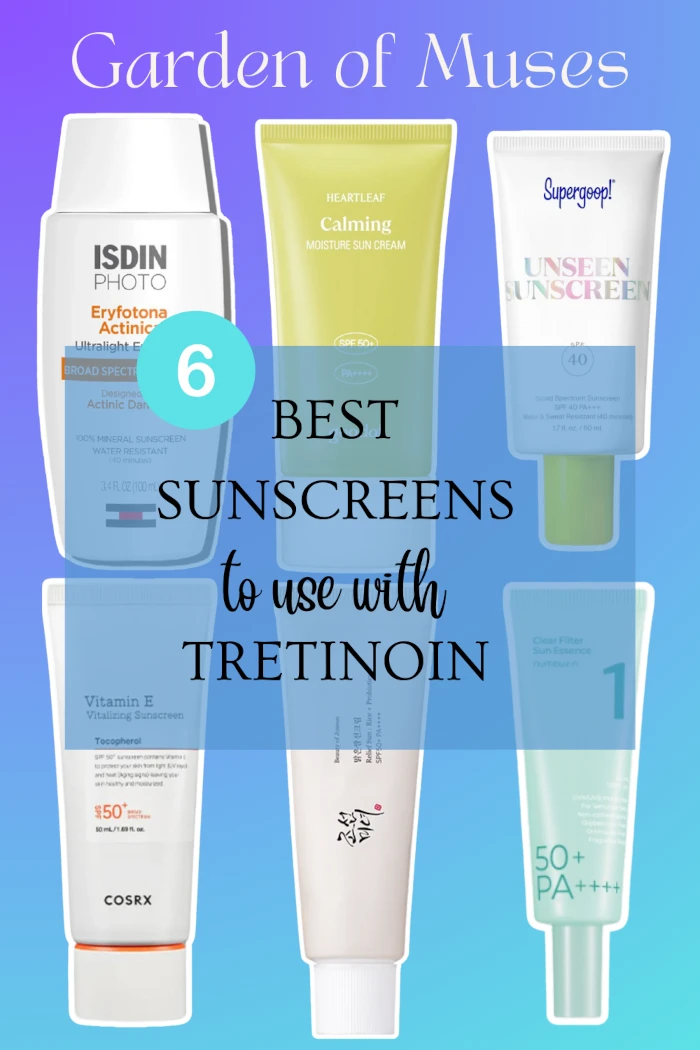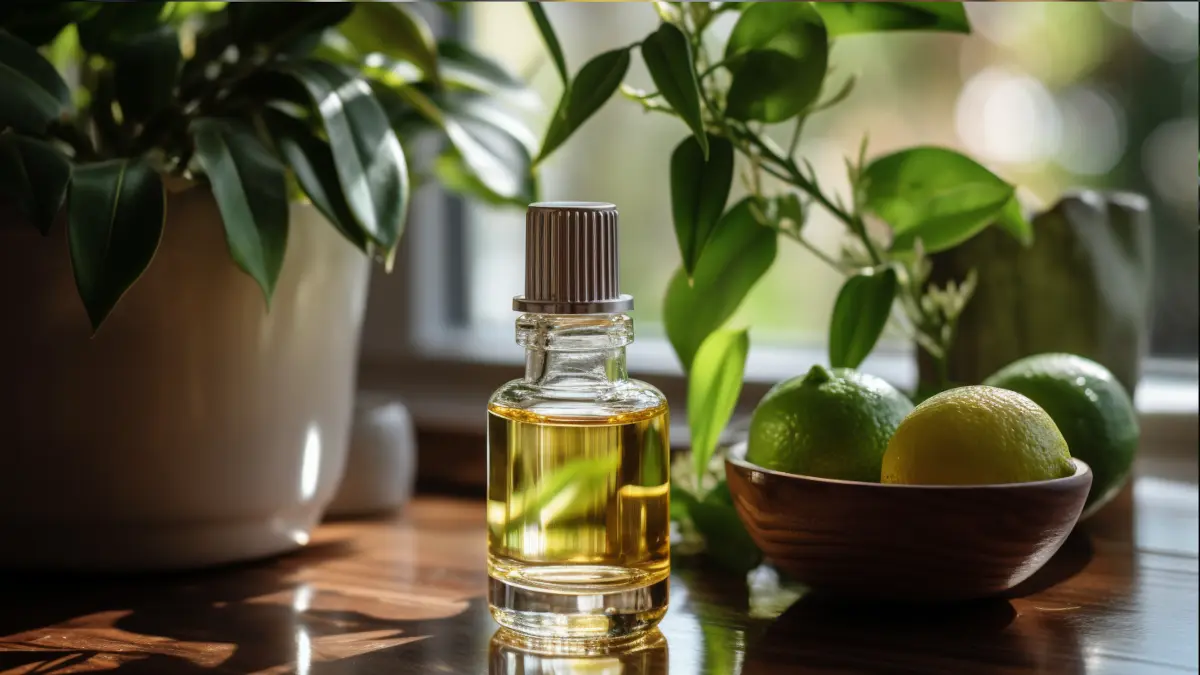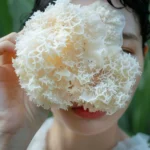Do you use products that contain fragrance? Have you ever wondered if fragrance in skincare is bad for your skin? What if you don’t have sensitive or redness-prone skin? Should you be avoiding fragrance no matter what your skin type?
I wrote an article about how damaging natural fragrant ingredients such as essential oils can be for your skin. But what about synthetic (aka artificial) fragrances? Are they just as bad for your skin?
The short answer is yes. Any fragrance potentially damages your skin and can result in sensitizing reactions. Even if you don’t see any damage occurring to your skin, the damage is still likely taking place and will reveal itself on the skin’s surface after some time (even years).
Read on if you’d like to know why so many skincare products still contain fragrance and how to spot fragrances in ingredient lists—since they’re not always listed clearly.
Fragrance in Skincare:
- What Is Fragrance?
- Why Do So Many Skincare Products Contain Fragrance?
- Synthetic Fragrance vs. Essential Oils
- Does Fragrance In Skincare Products Damage Your Skin?
- Why Essential Oils Are Particularly Bad For Your Skin
- The Fragrance Loophole
- Why You Shouldn’t Rely On ‘Fragrance-Free’ Labelling
- Fragrant Ingredients Potentially Sensitizing to the Skin
- Why I Can’t Quit Fragrance
- In Summary
What Is Fragrance?
Beauty guru Paula Begoin of Paula’s Choice and many other beauty gurus are firmly against it. But what is fragrance exactly? And what does it mean when listed in our personal care products?
According to the EWG (Environmental Working Group), the term fragrance or ‘parfum’ refers to an undisclosed mixture of various scent chemicals and ingredients used as fragrance dispersants, such as diethyl phthalate.
Fragrance can be made up of synthetic materials or natural essential oils and is generally used to replicate the smell of a particular ingredient or mask the smell of others. Unfortunately, since the ingredient list for the fragrance itself isn’t disclosed, we will not know what ‘fragrance’ is comprised of. In many cases, the ingredient list of ‘fragrance’ itself can be longer than the product itself!
Fragrance masks other scents, gives a product a particular smell, or creates a sense of luxury or indulgence. However, there is no functional purpose to the ingredient fragrance. It means that while it may be added to our skincare or personal care products, it doesn’t serve an active purpose and, in some cases, can cause irritation to the skin.
Why Do So Many Skincare Products Contain Fragrance?
Yes, it’s true. Most products contain some form of fragrance, even in minute amounts. Some brands are even a bit sneaky about it and don’t list fragrance ingredients as clearly as the term “fragrance. See below for a guide to ingredients to look out for.
Many skincare products contain fragrance mainly to mask the unpleasant scent of other skincare ingredients. The truth is that although many skin care ingredients are odorless, some naturally have quite an unpleasant odor.
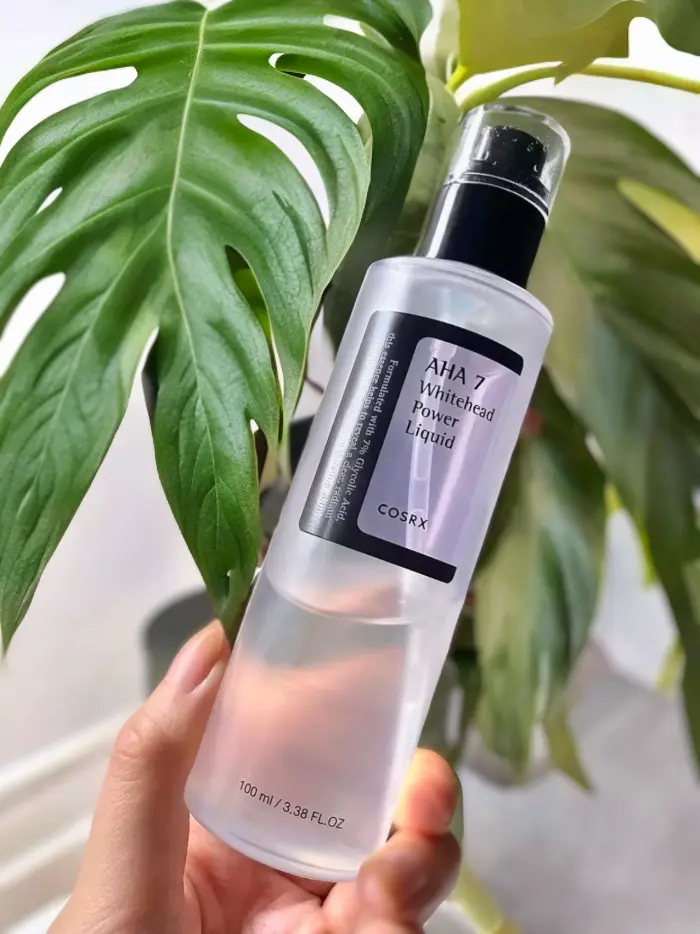
Take the COSRX AHA Whitehead Power Liquid, which I like and use regularly in my routine now. This chemical exfoliant doesn’t contain any fragrance.
It only contains ten ingredients, but it smells a bit…funky. I’ve just pumped a bit onto the back of my hand to sniff and describe the smell to you. It has a very slight fishy smell with a hint of rubber.
Some ingredients smell unpleasant, so fragrance is often added to skincare products. This is one of the essentials in my skincare routine, and it smells a little bit fishy/rubbery, but the smell does dissipate very quickly.
I’ve looked up the odors of the individual ingredients. This smell is due to the 1,2-Hexanediol in this product, which has an undesirable odor, according to a few cosmetic ingredient suppliers online.
And just in case you were wondering, 1,2-Hexanediol is a commonly used synthetic preservative with humectant properties. Still, it is also often used as a solvent to dissolve other ingredients in skincare products.
Okay, so my point here is that fragrance is mainly used to cover the unpleasant natural odors of some ingredients (that we really can’t do without if we want to formulate quality skincare products).
For me, the faint fishy odor of the COSRX AHA Whitehead Power Liquid isn’t enough to deter me from using a product that I’ve seen some pretty significant improvements in my skin. Plus, the smell dissipates very quickly once applied to the skin.
COSRX AHA Whitehead Power Liquid Ingredients List (last checked 2024)
Pyrus Malus (Apple) Fruit Water, Butylene Glycol, Glycolic Acid, Niacinamide, Sodium Hydroxide, 1,2-Hexanediol, Panthenol, Sodium Hyaluronate, Xanthan Gum, Ethyl Hexanediol.
Ingredients are referred from the COSRX official website.
Active Humectant/Moisturizing Herbs
Funnily enough, I find the smell of the Heimish All Clean Balm much more overpowering as it contains various essential (aromatic) oils and fragrant plant extracts.
I have only used this product once because I made a common novice skincare mistake and bought a best-selling product without reading the ingredients list first. The smell of all the essential oils in this balm was so overpowering that it made me feel sick. Probably also because I knew the potential damage I had just done to my skin barrier, not to mention the $32 I had just thrown down the drain. It was a lesson to always check ingredient lists before buying a new skincare product!
There is another reason so many skincare products contain fragrance, and it’s the same reason why other products such as shampoo, conditioner, baby care products, and household cleaning products have added fragrance. It’s been scientifically proven that we are more inclined to buy something if it smells nice.
I don’t think this reason applies to Korean skincare because most people buy skincare online. We, therefore, don’t use the scent of products as a deciding factor for what we purchase.
There is also a current trend of people self-educating about skincare ingredients and avoiding ingredients that may be harmful to their skin, including fragrance. That’s why so many great Korean skincare brands currently offer fragrance-free products. Some established brands even release “fragrance-free” versions of their best-selling products.
Synthetic Fragrance vs. Essential Oils
It can get confusing regarding skincare ingredients – fragrances are no exception! Although skincare products have many different fragrant ingredients, you can divide them into two main categories: synthetic fragrances and essential oils.
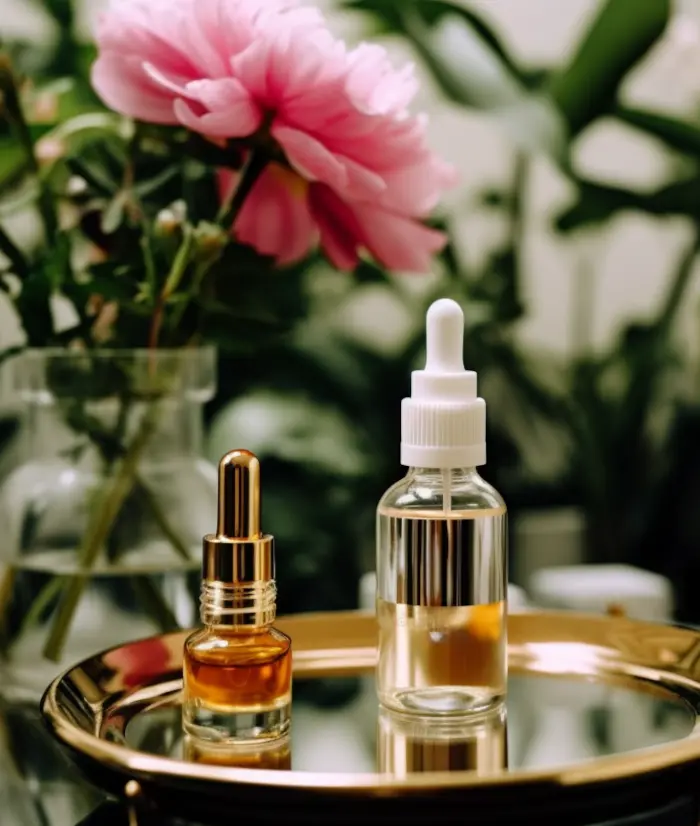
Synthetic fragrances aren’t derived from plant materials and are often made to ‘recreate’ natural scents. They are derived from various chemical compounds, including petrochemicals, phthalates, and benzene derivatives.
Due to laws put in place to protect the secret formulations of perfumes – skincare companies do not need to disclose how many and which compounds make up the synthetic fragrance added to their products.
This is why you will often only see the word “fragrance” in an ingredients list if the product is formulated with synthetic fragrance. And as I found out while researching for this article – products contain a complex mixture of several dozen to several hundred synthetic compounds. More than 3000 compounds are currently documented as fragrance ingredients by The International Fragrance Association (IFRA)!
Those figures make me avoid skincare products containing synthetic fragrances without even getting into how damaging these compounds can be for your skin and overall health.
So, what are essential oils, then? Essential oils are concentrated oils that contain quickly evaporating aromatic chemical compounds from plants and are often used as a natural alternative to synthetic fragrances. They can be derived from any aromatic part of various plants – such as flowers, leaves, bark, stems, or roots.
Although essential oils have a natural-based origin and have become preferred over synthetic fragrances, they are not a safer alternative; they may be worse for your skin. See below why they are so bad for your skin.
Does Fragrance In Skincare Products Damage Your Skin?
Although synthetic fragrances and essential oils have different chemical origins, they are both used to give skincare products nice scents or cover the unpleasant smells of other ingredients. And they are both potentially damaging to your skin – even if you don’t have sensitive skin or any current allergies.
Fragrance potentially damages your skin because synthetic fragrances and essential oils emit a range of volatile organic compounds (VOCs). These types of compounds undergo what are known as volatile reactions when exposed to air, heat, or light – which is what gives them a scent.
These volatile reactions quickly convert fragrant compounds into other chemical compounds that may sensitize the skin. This means that even if you don’t have any current skin sensitivities or allergies, fragrant ingredients can still result in contact allergy or contact dermatitis on your skin.
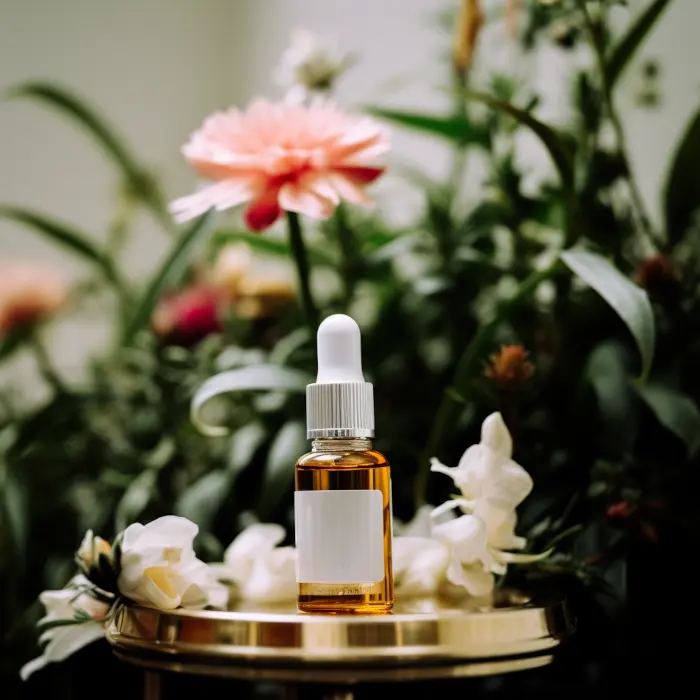
An example of just some of the volatile organic compounds found in rosemary oil (a type of essential oil). These compounds easily convert into other chemical compounds upon contact with oxygen, light, or heat.
Interestingly, scientific research has shown that fragrance ingredients are one of the most frequent causes of contact allergic reactions.
The Environmental Working Group rates Fragrance as an 8/10, with 10 being the most toxic and dangerous to human health. The rating is so high because there are many scientific studies regarding fragrance and its impact on human health.
Many studies have confirmed that humans are more likely to develop or get contact dermatitis. A clinical review published in the American Journal of Dermatology 2003 showed that 1-3% of tested patients reacted to fragrance components. It also states that at that time, out of the 2500 compounds that fragrance can be compromised of, 100 of those compounds are known allergens. The same review also looked at another study exploring that 10% of eczema patients tested reacted to fragrance or a fragrance mix when patch-tested.
In a study published in 2016, Thai scientists examined the effect of 26 fragrance compounds and their impact on humans. The study comprised 312 participants who were patch-tested with these 26 ingredients. The study showed a positive allergic reaction of contact dermatitis to 84 of the 312 ingredients, the most common being cinnamyl alcohol. It is also important to note that 26 fragrance compounds listed by the EU Cosmetics Directive must be shown on ingredient listings. These ingredients are not required in the US.
Another study conducted in Korea and published in 2005 looked at the frequency of allergic responses of patients across nine dermatology departments in one year to certain fragrance compounds. The study showed a high frequency of allergic reactions to popular fragrance compounds such as cinnamic alcohol and sandalwood essential oil. It also found that most cases of allergic reactions were patch tests on the face compared to other parts of the body.
Another study investigated the frequencies of sensitization to 26 individual fragrances (in 1508 eczema patients). The study found that 7.6% of the patients showed skin sensitivities to one or more of the 26 fragrances tested. Additionally, 75.7% of these cases were clinically significant (meaning they required medical attention).
Lastly, this study found that a whopping 9.4% (of 821 patients) had positive patch test reactions to hydroperoxides of limonene and hydroperoxides of linalool. Limonene and linalool are natural components found in some essential oils. However, they are commonly used to fragrance personal care and household products.
A detailed report compiled by the European Commission in 2012 called “Opinion on Fragrance Allergens in Cosmetic Products” also looked at many studies concerning fragrance and the allergies and reactions associated with fragrance. The study examined several scientific studies in Europe and other continents, such as Asia and the US. It concluded that contact allergies to ‘fragrances is a common, significant and relevant problem in Europe.’ It was found that of European residents, around 16% of European eczema sufferers are sensitive to fragrance ingredients. According to the report, 13 ingredients were of particular interest as patients generally were most exposed to the below ingredients:
- Amyl cinnamal
- Amylcinnamyl alcohol
- Benzyl alcohol
- Benzyl salicylate
- Cinnamyl alcohol
- Cinnamal
- Citral
- Coumarin
- Eugenol
- Geraniol
- Hydroxycitronellal
- Hydroxymethylpentyl-cyclohexenecarboxaldehyde
- Isoeugenol
Overall, many, many studies show the frequency or the likelihood of contact dermatitis or allergic reactions to these undisclosed chemical fragrance ingredients. However, despite this, companies can continue to hide these ingredients from consumers using one word on their ingredient listing – ‘fragrance.’
Companies choose to use fragrance to mask certain smells in the products or to attract a specific customer.
For example, a more luxurious body cream may contain some floral notes, attracting someone in their 40s or 50s. The smell is more refined and sophisticated, whereas a product marketed for teens may smell more ‘sweet’ and ‘fruity,’ giving it the allure of fun and youth.
Why Essential Oils Are Particularly Bad For Your Skin?
Although synthetic fragrances can also potentially damage your skin and are often derived from components of essential oils, essential oils are particularly bad for your skin in terms of the damage they can cause.
This is because each type of essential oil comprises hundreds of compounds. Some essential oils such as rosemary, geranium, and lavender contain 450 to 500 compounds!

Because all of these compounds are volatile organic compounds (primarily terpenes), the chances are pretty high that your skin will become sensitized.
Even if you have been using an essential oil on your skin for some time with no adverse effects, your skin can suddenly become sensitized at any time. This is because each volatile organic compound found in essential oils quickly converts into other compounds in light, oxygen, or heat.
Additionally, the compounds found in essential oils are microscopic (on a molecular scale), and they readily dissolve in fats and lipids – allowing them to easily cross the epidermis and enter the dermis layer of the skin.
Once these compounds are in the dermis, they can enter the bloodstream and elicit an immune response. The resultant allergic contact dermatitis is similar to when our skin comes in contact with poison ivy.
The Fragrance Loophole
There is a loophole in personal care manufacturing whereby companies can use fragrance to protect their intellectual property or ‘trade secrets.’ The American FDA made this loophole for perfume companies in 1966 under the Fair Packaging and Labelling Act, whereby the regulation aimed to protect companies from their competitors.
Nowadays, it protects them from their competitors and doesn’t allow us as consumers to make informed choices about the products we use.
In 2003, the EU Cosmetics Directive stated after a report was conducted that 26 fragrance substances must be listed in product ingredient listings due to several positive reactions shown in previous scientific research.
This directive only applies to products in the European Union, not those in the United States. It is a stepping stone to more straightforward and transparent ingredient listings.
Why You Shouldn’t Rely On ‘Fragrance-Free’ Labelling
Fragrance-free isn’t all what it is cracked up to be either, and as a consumer, we must be cautious and check the ingredients! Fragrance-free means that the ingredient fragrance is not listed in the ingredients listing.
Like the term ‘natural,’ it doesn’t mean much legally. It implies that fragrance or parfum is not listed. But there are many other ingredient names on skincare ingredient lists. Also, I’ve noticed that a lot of skincare products marketed as “clean,” “natural,” or “green” actually contain fragrant ingredients that can do damage to your skin.
Fragrance-free products may still have a scent. These fragrance-free products may sometimes contain irritating essential oils such as sandalwood, lavender, or some of the fragrance compounds listed above, potentially irritating the skin. However, they might not be fragrance-free as they contain certain synthetic compounds.
If you are sensitive to fragrances, double-check those ingredient lists! The good thing about fragrance-free is that even though there may be a fragrance compound in there, it is listed, and from there, the consumer can make an educated choice.
Unscented products are also not entirely devoid of fragrance—in fact, they could be quite the opposite. The term ‘unscented’ means that the product may contain a compound classified as a fragrance that is used as a masking agent.
The bottom line is that it prevents the nose from smelling unpleasant odors from the ingredients.
If you are allergic to fragrance, it’s best to stick with fragrance-free products and double-check the ingredient listings for any potential triggers. Even though it may contain fragrance compounds, they are at least listed, and you can avoid them if needed. Also, trust your nose. If you smell a product that smells exceptionally flowery or citrusy when stated it is fragrance-free or unscented – then clearly the smell is coming from somewhere.
Below is a list of common fragrance ingredients to watch out for on skincare product ingredient lists. I know there are many, and I could never remember them without referring to this list. I haven’t included all fragrant ingredients, just the most commonly used ones. I haven’t included essential oils in this list either, as they are all sensitizing (regardless of which plant they are derived from).
To ensure I’m avoiding as many fragrant ingredients as possible, I always prefer to use skincare products with minimal ingredient lists suitable for people with sensitive skin, even though I don’t have sensitive skin. I also like to refer to the CosDNA website for a breakdown of a product’s ingredient list to see whether it contains either any potentially pore-clogging or skin-sensitizing ingredients.
Fragrant Ingredients Potentially Sensitizing to the Skin (Excludes Essential Oils)
Alpha isomethyl ionone, also known as isomethylionone, is a synthetic fragrance with a floral-woody scent that can cause a sensitized reaction at concentrations as low as 0.001%.
Amyl salicylate is a synthetic fragrance with a sweet, floral odor derived from the esterification of salicylic acid with benzyl alcohol.
Anisaldehyde is an organic compound naturally found in anise seed.
Anise, aka aniseed, contains fragrant components, potentially sensitizing the skin.
Balm mint extract, aka lemon balm, Melissa officinalis.
Balsam of Peru is a sticky aromatic liquid made from cutting the bark of the tree Myroxolon balsamum. It smells of vanilla and cinnamon and is a standard used in patch tests for skin sensitivity due to its high incidence of causing reactions.
Benzoin resin extract is a balsamic resin with a vanilla scent extracted from several trees in the styrax genus.
Benzyl salicylate is a synthetic fragrance compound with a floral scent used as a fragrance and UV light absorber.
Butylphenyl methylpropional is a synthetic fragrance with a strong floral scent.
Cananga extract is derived from the leaves or flowers of the Cananga ordata perfume tree.
Cardamom is a plant in the ginger family. Its main constituent is terpene.
Cinnamon, Cinnamyl alcohol, Hexyl Cinnamal, and cinnamic aldehyde are mainly derived from cinnamon leaves and oil.
Citronellol is mainly derived from geranium and rose.
Citrus-related ingredients include lemon, orange, mandarin, lime, grapefruit juices, peels, and oils.
Coriander contains many fragrant components.
Coumarin is found in different plant sources such as vegetables, spices, fruits, and medicinal plants, including all parts of the plants—fruits, roots, stems, and leaves. It is a common ingredient with a sweet, vanilla, nutty scent. It is one of the “EU 26 fragrances” that has to be labeled separately. It’s best to avoid it if your skin is sensitive.
Cyclamen aldehyde is a synthetic fragrance with a strong floral-green/floral-stem odor with a pronounced cucumber/melon scent.
Eucalyptus extract contains many fragrant components, hence the wonderful aroma.
Eugenol is mainly derived from oils of clove and cinnamon leaves but is also found in roses, carnations, hyacinths, and violets.
Farnesol occurs naturally in the oils of citronella, cyclamen, lemongrass, rose, musk, and balsam and gives a delicate, green floral scent.
Fennel seed and leaf extracts. AKA Foeniculum vulgare extract.
Floralozone is a synthetic fragrance with a floral/fresh scent.
Fragrance
Frankincense extract has a woody/earthy/spicy scent, AKA olibanum extract.
Galbanum is a fragrant gum resin extracted from Asiatic plant species, mainly Ferula galbaniflua with a fresh/green scent.
Gardenia florida extract and hydrolyzed gardenia florida extract are derived from gardenia flowers. Although they are high in flavonoids and ferulic acid, they can sensitize the skin.
Geraniol constitutes a large portion of rose and palmarosa oil, geranium oil, lavender oil, jasmine oil, and citronella oil.
Hedione, also known as methyl dihydro jasmonate, is a synthetic fragrance that gives an elegant floral scent with a note of jasmine and citrus.
Hydroxycitronellal is a synthetic fragrance with a sweet, fresh odor of lily of the valley.
Iris extract. AKA Iris Florentina has a robust violet scent.
Isoeugenol is mainly derived from nutmeg oil and ylang-ylang oil.
Jasmine extract is derived from the flowers of various Jasminum species and gives a sweet, rich floral fragrance.
Jonquil extract is extracted from the fragrant yellow flowers of the Narcissus jonquilla, common in the French countryside.
Laurus nobilis leaf extract is derived from an aromatic evergreen tree known as sweet bay, also used as bay leaf in cooking.
Lavender extract. AKA Lavendula angustifolia and Lavendula officinalis contain fragrant components, including linalool and linalyl acetate.
Lemongrass extract contains fragrant components, including limonene and citral.
Limonene is a significant component of the oils found in citrus fruit peels, including lemon, orange, mandarin, lime, and grapefruit.
Linalool is mainly derived from lavender and coriander oils but can be produced synthetically.
Litsea cubeba aka Chinese pepper, has a crisp, citrus scent.
Lovage root extract, aka Levisticum officinale, has a celery-like scent.
Menthol is derived from peppermint and has the same sensitizing effect. It’s used in products to produce a cooling sensation on the skin.
Menthone is a significant constituent of peppermint and many essential oils. It produces a cooling sensation but is sensitizing to the skin.
Menthoxypropanediol is a synthetic derivative of menthone. Its cooling effect is 2.0 to 2.5 times stronger than that of menthol. It’s often used in lip-plumping products.
Menthyl lactate is the ester of menthol and lactic acid. It also has a cooling effect on the skin. It may be synthetic, plant-derived, or animal-derived.
Mint is an umbrella term for plants belonging to the Mentha family, including spearmint, peppermint, orange mint, apple mint, and more.
Myrrh is a fragrant gum resin. The main constituents include limonene, a-pinene, and eugenol.
Myrtus communis, aka myrtle extract.
Narcissus poeticus flower extract and flower wax are daffodil types used primarily on French skincare products.
Neroli is an essential oil derived from orange blossoms.
Orchid. Although this extract contains many phenolic compounds and flavonoids, it can be sensitizing since it is a fragrant flower.
Oregano. Oregano is another fragrant herb with many terpenes, which can cause skin sensitization.
Origanum majorana, aka marjoram, is an herb closely related to oregano.
Orris root is a term used for the roots of Iris germanica and Iris pallida with a violet-like scent.
Pentadecalactone is a synthetic fragrance with a musk scent.
Peppermint and spearmint extracts include Mentha piperita, Mentha spicata, and Mentha viridis.
Perfume is also sometimes listed as parfum or aroma.
Pogostemon cablin extract, aka patchouli shrub, has a musky-earthy aroma.
Rosa gallica, aka the Gallic rose, is a species in the rose family.
Rose flower extract contains fragrant components that can be sensitizing to the skin.
Santalum album seed extract, also known as sandalwood, has a high fatty acid content. However, sandalwood extract can be sensitizing as it contains fragrant components.
Sclareolide is a fragrant ingredient derived from various plant sources, including clary sage.
Verbena extract is a fragrant plant extract that is a rich source of antioxidants but can be sensitizing.
Vetiver extract comes from the dense, clumping grass native to India; its fragrance has a calming effect but can sensitize the skin.
Ylang Ylang is a potent antioxidant that may help improve uneven skin tone but can also sensitize the skin due to its fragrant constituents.
Why I Can’t Quit Fragrance
After researching fragrance, I am stunned by how inaccurate my trusted ingredient listing can be on my personal care products due to ‘fragrance.’ It’s pretty scary to know the potential cocktail of ingredients not listed in my products and how much conclusive data there is about how these ingredients react to the skin and cause allergic reactions.
Despite this, I can’t help but sometimes enjoy the pleasant smell of some of the products I use. I know I won’t be throwing out any products that contain fragrance soon.
The reason? Some of my favorite tried and tested products contain fragrance, and while I have sensitive skin, I haven’t reacted, and these products work for me. I am fully aware of the dangers that fragrance products contain, and while I have read the research (and trust me, there is a lot out there), I choose to continue to use products with fragrance or parfum listed in the ingredients as I do believe the concentrations are low (generally one of the last on the ingredients list). The smell of a product brings me some happiness and joy.
While you should be careful of what you put on your skin, you must also enjoy it. If I took away all the products that contained fragrances or smells I love, I think a lot of skintertainment would be gone!
In Summary
No matter whether fragrance is derived synthetically or from essential oils, it’s best to avoid these ingredients in your skincare products. Even if you don’t have sensitive skin, the volatile organic compounds in fragrant ingredients can cause skin sensitization and even contact allergy or contact dermatitis.
Of course, many fragrant ingredients (including synthetic compounds, aromatic plant extracts, and essential oils) are commonly used in skincare products. Also, many skincare products today still contain some fragrance, so it can be challenging to avoid fragrance altogether. What you can do is minimize the amount you’re exposing your skin to every day.
It’s best not to rely on “fragrance-free” marketing and always check ingredient lists before using a product on your skin. This is because skincare products can be free of fragrance (as in they have no scent) but contain fragrant ingredients to mask or neutralize any unpleasant odors of other skincare ingredients.
Show Me Proof
- Johansen, Jeanne D. “Fragrance contact allergy: a clinical review.” American journal of clinical dermatology 4 (2003): 789-798.
- Vejanurug, Patnapa, Poohglin Tresukosol, Praneet Sajjachareonpong, and Pailin Puangpet. “Fragrance allergy could be missed without patch testing with 26 individual fragrance allergens.” Contact Dermatitis 74, no. 4 (2016): 230-235.
- An, Susun, Ai‐Young Lee, Cheol Heon Lee, Do‐Won Kim, Jeong Hee Hahm, Kea‐Jeung Kim, Kee‐Chan Moon, Young Ho Won, Young‐Suck Ro, and Hee Chul Eun. “Fragrance contact dermatitis in Korea: a joint study.” Contact Dermatitis 53, no. 6 (2005): 320-323.
- Heisterberg, Maria V., Torkil Menné, and Jeanne D. Johansen. “Contact allergy to the 26 specific fragrance ingredients to be declared on cosmetic products in accordance with the EU cosmetics directive.” Contact Dermatitis 65, no. 5 (2011): 266-275.
- Dittmar, Daan, and Marie LA Schuttelaar. “Contact sensitization to hydroperoxides of limonene and linalool: results of consecutive patch testing and clinical relevance.” Contact Dermatitis 80, no. 2 (2019): 101-109.
